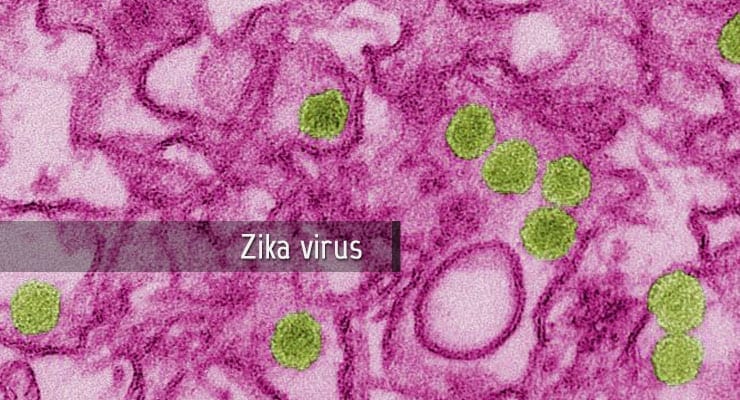Scientists at the University of Massachusetts Medical School (UMMS) have performed the first CRISPR/Cas9 screen to discover human proteins that Zika virus needs for replication.
This work, led by Abraham Brass, MD, PhD, assistant professor in microbiology & physiological systems, reveals new leads that may be useful for halting Zika, dengue and other emerging viral infections.
“These genetic screens give us our first look at what these viruses need to survive,” said Dr. Brass. “Our lab and others in our field have worked hard to develop the systems and infrastructure needed to investigate the genetics underlying how viral pathogens use our own cell’s machinery to replicate. This has allowed the scientific community to respond quickly when the Zika virus threat emerged. In our lab, we adapted the technology and tools we’d established over the last four years working with other viruses to begin investigating the biology of Zika virus.”
With just a few proteins of their own, Zika and dengue viruses must commandeer a host cell’s resources and proteins in order to grow and replicate. Some antiviral therapies used for HIV and hepatitis C virus work by disrupting the virus’ ability to use these resources. The first step in applying this anti-viral approach to Zika and dengue is to narrow down which of the more than 20,000 human proteins the virus needs to replicate.
“These viral dependencies on human proteins represent weaknesses that could potentially be used to prevent or stop infection,” said Brass. “Just like any enemy, the more we know about how these viruses function and replicate the better.”
Brass and UMMS colleagues Timothy F. Kowalik, PhD, associate professor of microbiology & physiological systems, and Sharone Green, MD, associate professor of medicine, are experts in flaviviruses, a family of viruses transmitted by mosquitos that include Zika, yellow fever, dengue and West Nile. They have developed a suite of powerful tools, including RNAi and CRISPR technologies, viral evolution analyses, and mouse models, to probe how these viral invaders exploit host cell proteins to replicate.
Using the RNAi and CRISPR/Cas9 screening technologies they’d developed for dengue and influenza, George Savidis, research associate, Paul Meraner, MD, postdoctoral fellow, and William M. McDougall, PhD, postdoctoral associate, in the Brass lab, began by knocking out or depleting each protein in the human genome one at a time, then seeing how Zika or dengue virus grew when that human protein was gone.
Brass and colleagues identified a handful of host proteins critical to both Zika and dengue viral replication. Among these was the AXL protein, which the virus uses to gain access to and enter the cell. They also identified the endoplasmic reticulum membrane protein complex (EMC) as critical to early-stage infection by the viruses. Together, these findings represent potential therapeutic targets that could help to treat and prevent infection. The next step is to develop therapies that inhibit Zika and dengue by targeting these proteins.
“We plugged Zika virus into our system and immediately began studying it,” said Brass. “What might have taken much longer to build from the ground up, we were able to turn around in a few short months. Our goal was to get the screens done, find what the viruses need to grow, and then get the data out to the rest of the research community right away.”
This work was supported by the NIH and by an Investigators in the Pathogenesis of Infectious Disease award from the Burroughs Wellcome Foundation.
Read more: Identification of Zika Virus and Dengue Virus Dependency Factors using Functional Genomics



